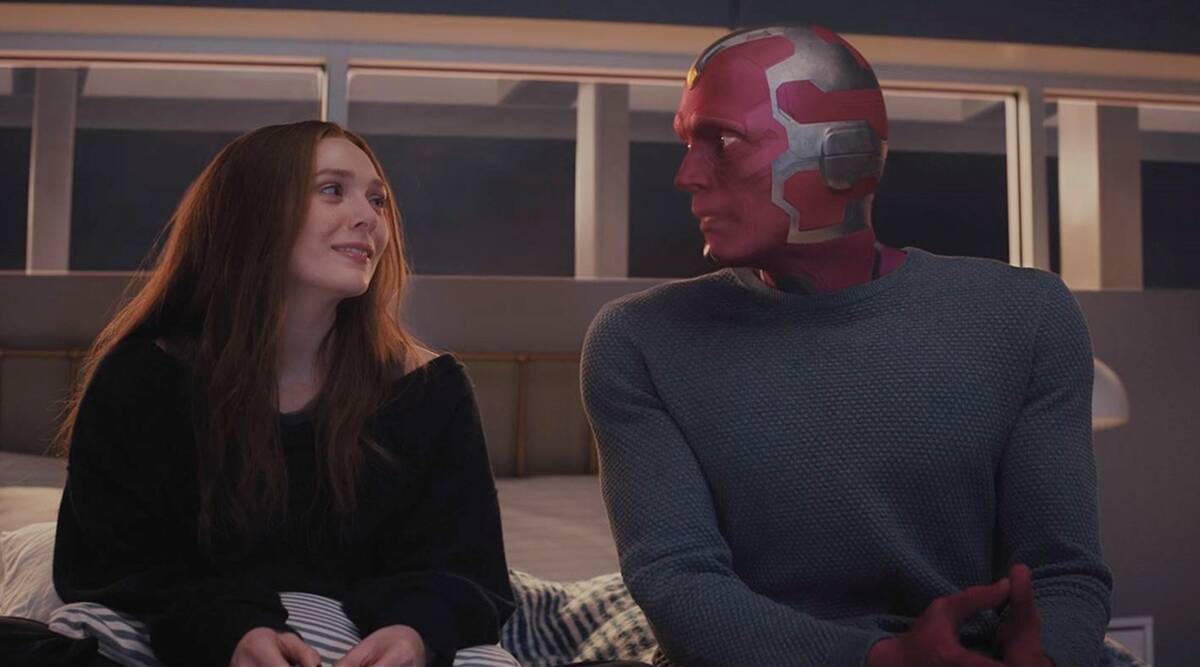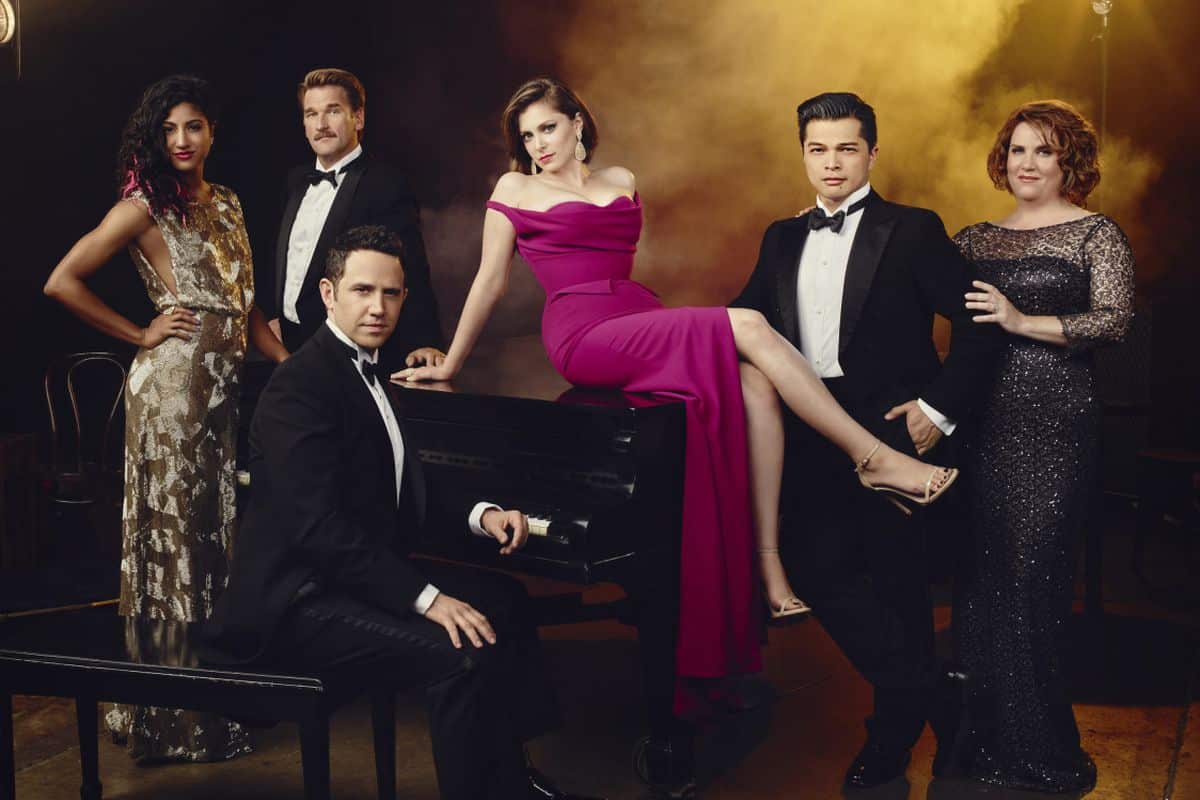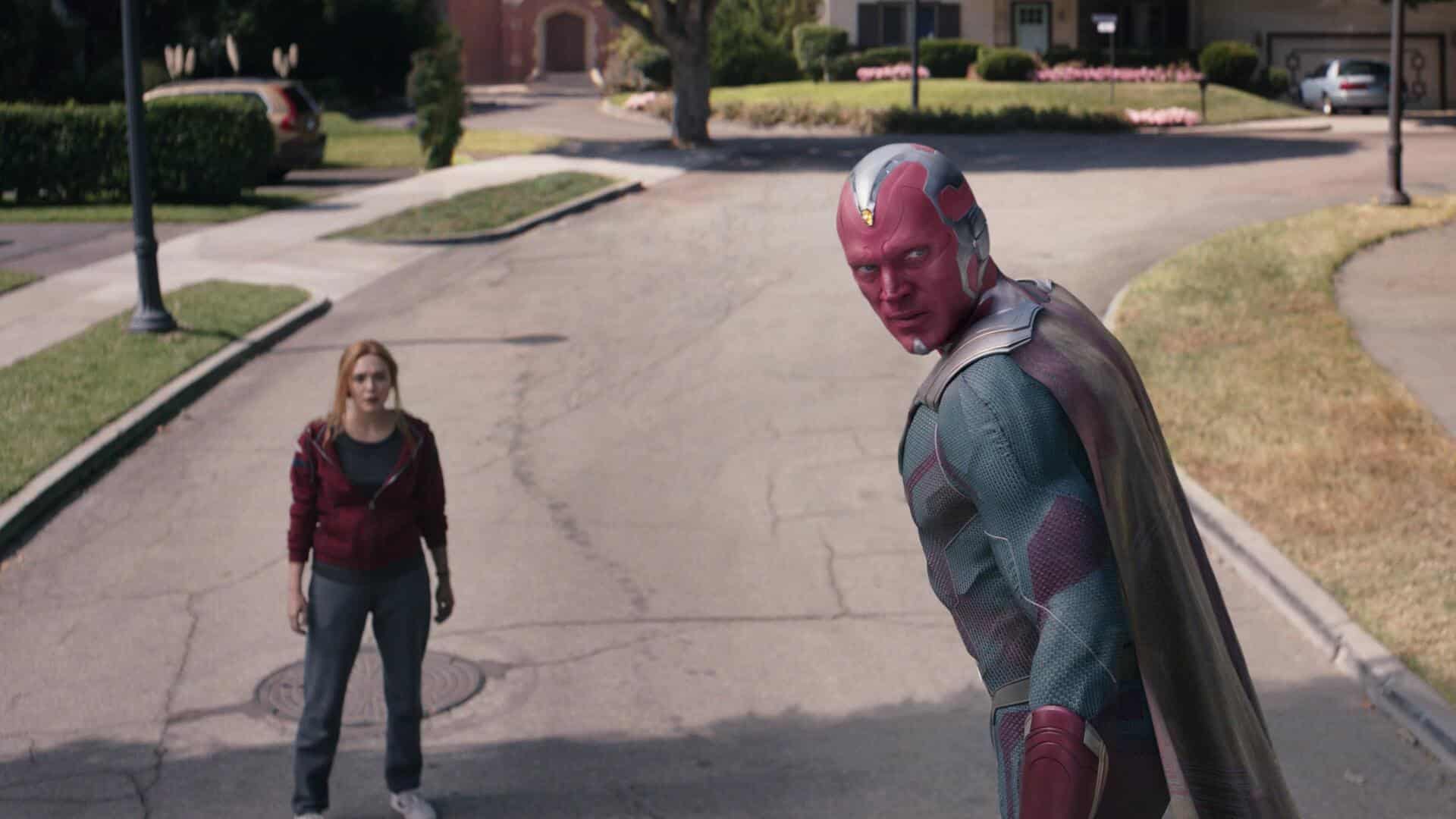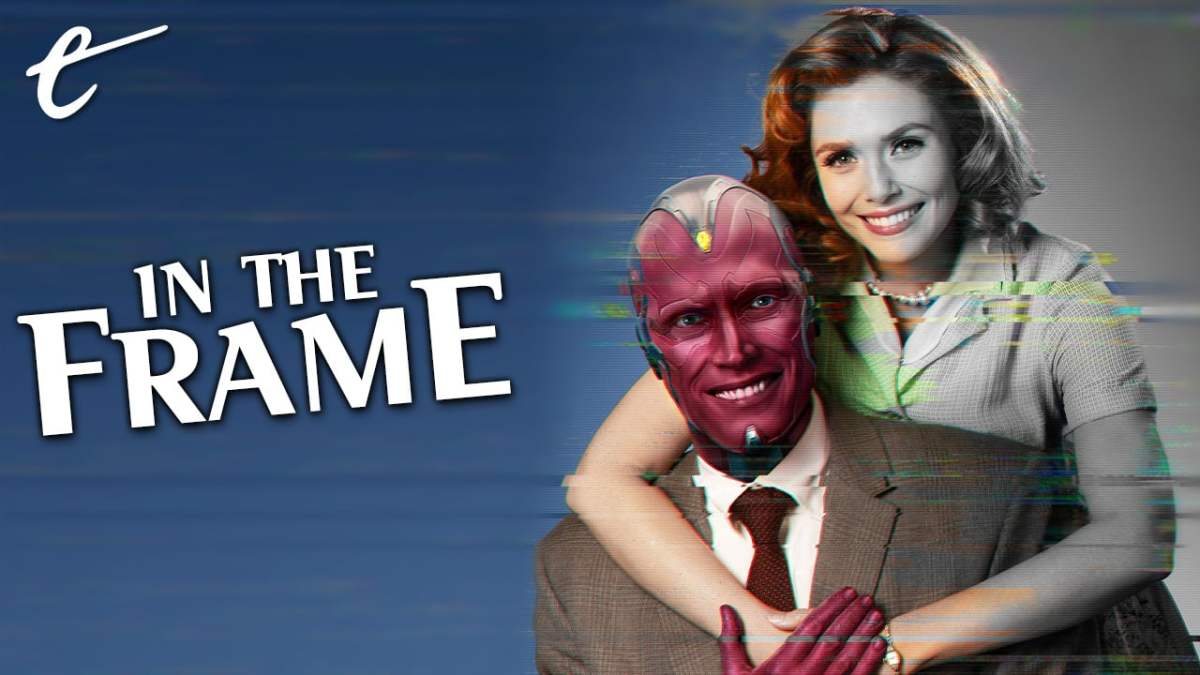This article contains spoilers for all of WandaVision.
There was a lot resting on WandaVision. Barring Spider-Man: Far From Home, the show marked the first major Marvel Cinematic Universe (MCU) project since the record-breaking and zeitgeist-dominating Avengers: Endgame. It was the first MCU project to premiere after the unplanned “year without superheroes” as the pandemic pushed the company’s blockbuster slate down the schedule. It was also the first MCU project to land on Disney+, serving as the company’s beachhead into television.
It succeeded. Reviews were positive, bordering on ecstatic, with /Film describing it as “unquestionably the most experimental thing Marvel has ever produced.” Reports suggest that demand for the later episodes of the season caused Disney+ to crash, indicating that the series performed beyond all the company’s expectations. The show has broken into Nielsen’s streaming top 10, although — if anything — the service’s unique method of calculation likely underestimates the show’s appeal.
This is to say nothing of the creative appeal of the show’s early episodes. If nothing else, the early episodes of WandaVision drew an audience attracted to superhero content into an extended exploration of the history of the domestic sitcom, an earnest and sincere celebration of a true American cultural institution. In an age where some viewers balk at watching older media, WandaVision got millions of people to watch a black-and-white sitcom in a 4:3 aspect ratio.
These early episodes of WandaVision were more than just “spot the reference” for those interested in the medium’s history. Instead, they cleverly married form and function, tying narrative developments to the show’s evolving televisual language. It managed to use the conventions of particular eras of television to shape and expand the story that was being told. It’s a rare formal elasticity in an otherwise visually and aurally consistent MCU.

For example, Wanda (Elizabeth Olsen) and Vision (Paul Bettany) were only able to conceive children as the show’s sitcom world moved from the 1960s to the 1970s, reflecting the shifting norms about what could be shown (and inferred) on American network television. Later, when the show adopted the less formal visual language of Malcolm and the Middle, Vision was able to use the novel tool of location shooting to wander off the established sets that had confined him in earlier episodes.
This is very clever, and WandaVision deserves credit for these early experiments with genre and tone. In its earlier episodes, WandaVision demonstrated a canny understanding of the medium’s history as it hopped from one decade to the next. However, as the show caught up to the present, it seemed to end up frozen in place. Like some superhero equivalent of Zeno’s paradox, it seems like WandaVision could never quite catch up with modern television.
Early on, WandaVision hinted that Wanda might be culpable for what is happening in the small town, keeping the inhabitants of Westview hostage to play out her own nostalgic fantasies. After all, a powerful individual trapping a community inside a monstrous nightmare of 1950s nostalgia was certainly an evocative image after the last four years. Perhaps Wanda had just wanted to “Make Westview Great Again” and didn’t care whom she had to hurt to do it.
This would be a bold move for the MCU, which has spent the half-decade since Avengers: Age of Ultron ensuring that its heroes (especially Wanda) avoid consequences for their actions. Indeed, the show revealed that Wanda did cause the event that trapped Westview in the sitcom bubble. However, the show also contorted to provide conventional villains to deflect any blame — the manipulative witch Agatha Harkness (Kathryn Hahn) and gung-ho bureaucrat Tyler Hayward (Josh Stamberg).

WandaVision has worked hard to exculpate Wanda, insisting that Hayward’s decision to treat her as a clear and present danger is unreasonable and even providing Agatha with a catchy villain theme song. Wanda’s manipulation of Westview is largely excused as a response to trauma, with Agatha summarizing it as “magic on autopilot” as if to reduce Wanda’s agency. This approach worked, as fans focus on Vision’s heart-breaking dialogue ahead of the agony Wanda inflicts on an entire town.
This is particularly true in the finale, when Agatha confronts Wanda with the pain that she has inflicted on the citizens of Westview. “Heroes don’t torture people,” Agatha insists, quite reasonably. It gets through to Wanda. However, it’s all a ruse to get Wanda to lift the spell, letting S.W.O.R.D. into Westview and further weakening Wanda. Once Wanda releases the town’s inhabitants, the issue is never broached again.
There’s no suggestion that Wanda will face consequences for holding an entire town hostage to her nostalgic fantasy.WandaVision insists that the harm Wanda inflicts is excused because she did not intend it. This is how Wanda draws the line between herself and Agatha, when she travels back to the scene of Agatha’s original sin. “The difference between you and me is that you did this on purpose,” Wanda states as she surveys the dead bodies, and the show seems to believe this. When the townsfolk react with fear and suspicion to the woman who enslaved them, Monica Rambeau (Teyonah Parris) paints this as unfair. “They’ll never know what you sacrificed for them,” she tells Wanda.
WandaVision was always going to revert to the standard superhero template. There was no way that Disney would ever allow one of its most prominent female superheroes to be cast as a villain in her own narrative after having an emotional breakdown. Disney is a studio that is particularly subject to the whims of social media, and the studio would not want a repeat of the extremely vocal reaction to Daenerys’ (Emilia Clarke) arc in the final season of Game of Thrones.

In doing so, like Age of Ultron before it, WandaVision marks the boundaries of the MCU. It firmly establishes that the shared universe’s expansion into the medium of television will only be so experimental. There is something slightly frustrating in having these limits established so firmly and so early. If the MCU arrived on Disney+ like explorers seeking the New World, WandaVision crashes the expedition right into the unyielding Pacific. It seems to say, “This far, but no further.”
It is particularly frustrating because that established boundary is well short of the limits of modern television. Critics have been quick to invite comparisons between WandaVision and Legion. This makes sense. Both are hour-long live-action “quirky” superhero shows based on characters introduced in Marvel Comics. Both offer a sharp stylistic departure from their cinematic relatives, with both WandaVision and Legion eagerly inviting the use of that vague-but-alluring adjective “Lynchian.”
Legion premiered in 2017. Like WandaVision, it told the story of an extremely powerful superhuman suffering a nervous breakdown and warping reality around themselves. Legion focused on David Haller (Dan Stevens), a mutant who could bend reality to suit his whims. If anything, Legion was far more experimental than WandaVision; exposition was provided via animation, psychic confrontations played as dance or rap battles, and big set pieces were framed as musical interludes.
It’s impossible not to make connections between Legion and WandaVision. Much like Agnes got her big villain song, the evil Lenny (Aubrey Plaza) gets a big dance number when her villainy is revealed. Much like the early episodes of WandaVision were shot in black and white, an extended sequence of a first season episode of Legion is shot like a black-and-white expressionist horror film. However, these comparisons don’t flatter WandaVision, demonstrating how much further Legion was willing to go.

While WandaVision is unwilling to hold Wanda to account, Legion is quick to insist that David’s own very real trauma does not excuse his abuse of others. In the second season finale, David uses his powers to turn his girlfriend Syd (Rachel Keller) into a puppet. It is a grotesque violation, and Syd calls him out. David spends the final season as the show’s antagonist. The characters and the audience understand that David needs help, but also that he cannot be allowed to hurt others.
This nuance is reflected throughout the cast. WandaVision neatly delineates its cast into heroic characters like Jimmy Wu (Randall Park) or Monica Rambeau (Teyonah Parris) who support Wanda, and villainous characters who do not. In contrast, whereas WandaVision presents Hayward as a two-dimensional villain, Legion makes a point to develop its own mutant-hunting bureaucrat Clark Debussy (Hamish Linklater) into a fully formed character.
However, it isn’t just superhero stories that have tackled similar ground with more nuance and grace. WandaVision often plays like a superhero riff on Crazy Ex-Girlfriend, which launched in 2015. Like Wanda, Rebecca Bunch (Rachel Bloom) is a young woman going through an existential crisis who flees to a small town as a way of reconnecting with a long-lost love, only to end up trapping the inhabitants of that community inside her increasingly dangerous genre-inflected delusions.
Of course, Crazy Ex-Girlfriend is playing with the conventions of romantic comedies and musicals instead of classic sitcoms, but the comparison feels apt. While Wanda uses the language of television comedy to filter her nervous breakdown, Rebecca escapes into fantasy segues drawn from musicals. Crazy Ex-Girlfriend has been (deservedly) praised for the “quietly revolutionary” way it tackled Rebecca’s mental health, as she spirals out of control and affects the lives of those around her.

As with Legion, Crazy Ex-Girlfriend retains sympathy for its protagonist without letting her off the hook. In contrast to outsourcing the villain song to a scapegoat character, Rebecca gets her own big musical number realizing she’s “the villain in (her) own story.” Like David, Rebecca needs help to get better. One of the big recurring arcs in Crazy Ex-Girlfriend is Rebecca trying to manage her mental health and to understand that she is not alone in doing so.
In the past decade, television has gotten better at exploring issues related to psychological wellbeing through the lens of genre fiction, refusing to paint those afflicted as entirely saints or sinners. Legion and Crazy Ex-Girlfriend are both stories about characters who remain sympathetic even as they are held to account for how their coping mechanisms hurt others. As such, WandaVision feels curiously regressive, unable to imagine Wanda with the agency to be anything but a conventional superhero.
Marvel is one of the biggest entertainment brands on the planet. It is ubiquitous and inescapable. Such success perhaps encourages a certain complacency. After all, if it’s not broken, why bother trying to fix it? It might be too much to expect the brand to be on the cutting edge of television storytelling when it comes to grappling with these themes. Still, for all its early appeal and potential, it’s disappointing that WandaVision should ultimately feel so stuck in the past.






Published: Mar 5, 2021 11:00 am